The Great Bokashi Composting Experiment
Several weeks ago, Kati posted her garden plan and introduced us to Bokashi composting. I was so intrigued that I researched it right away, and decided to give it a try.
My History With Composting
You may notice I’ve never written about composting before. Don’t be fooled–I have tried to compost! But I keep waiting to find the method that works well before I write about it. I’ve bought two different composting bins, but have not had much success.
My yard (1/5 acre) is too big–it produces more grass than the bins can hold. And yet it is not big enough–there’s no good spot to dump everything into a big composting pile. I tried adding my food scraps, but nothing seemed to decompose very quickly, and soon I gave up.
I’ve concluded composting takes a lot of work–without attending to it regularly (adding water, turning it), the decomposition process takes a long time. I certainly can’t make enough compost to fill my garden beds every spring–so is it worth it?
A New Way To Compost
Composting uses microorganisms to decompose food and yard waste, using air and water. Technically, Bokashi is actually a method of fermenting. The microorganisms break down and pickle the food waste. To keep things simple, I’m calling it Bokashi composting, even though this is somewhat of a misnomer.
Basically, you take all your food waste and put it in a bucket. Spread Bokashi mixture (made of wheat bran, water, molasses, and microorganisms) on top, and seal it up. Once the bucket is full, keep it sealed for 2 weeks, then bury it in the garden. After another two weeks, the food is fully decomposed and incorporated into the soil.
It is much faster than traditional composting, and has many benefits.
Reduces Food Waste
With our new eating habits, we eat so many vegetables, so I have been throwing away TONS of peels, seeds, cores, etc. In just 3 weeks I have filled a 6-gallon bucket. Technically, with Bokashi composting you can recycle ANY food, including cooked meat, cheese, eggs, leftovers, etc. I have chosen to start with just fruit and veggie scraps.
No Rotten Smells and Pests
Because the Bokashi system is sealed in an airtight bucket, there is no smell except when you open it to add more food. Even then, the smell is pickle-y, not rotten. Once it’s finished fermenting, it gets buried in the garden–so it never attracts flies, bugs, mice, or other animals.
Quick and Efficient
Under normal circumstances, food and yard waste will decompose completely in 12-18 months. Traditional composting can speed that process so it takes 3-4 months. Bokashi composting takes only 2 weeks in the bucket, and about 2 weeks in the ground.
Improves the Soil
The fermentation process breaks down the food waste, and then when it’s added to the garden the microbes in the soil decompose it completely within a short time (summer: 7-10 days; winter 20-30 days). Adding the Bokashi waste feeds the soil, helping everything from microorganisms to earthworms to plants.
Minimal Effort
Call me a wimp, but I HATE turning a compost pile every week. Inevitably I end up at the chiropractor, and sneezing from allergies. Bokashi composting is as easy as scraping scraps into the garbage can, sprinkling it with “sugar”, and then adding it to the garden. If this method proves effective, it definitely qualifies for the “Lazy man’s composting” award.
Bokashi Composting in 10 Easy Steps
I wanted to try this method, but I didn’t want to fork out tons of money for equipment, only to find it won’t work for me. So I scoured the internet for information, and made my own Bokashi system.
Step 1: Get a Bucket and a Lid
 I’ve done a little food storage, so I actually had an empty bucket with Gamma Lid sitting around. It needs to be airtight, and these Gamma lids are awesome because they’re easy to open with one hand (while the other is clutching banana peels and onion skins).
I’ve done a little food storage, so I actually had an empty bucket with Gamma Lid sitting around. It needs to be airtight, and these Gamma lids are awesome because they’re easy to open with one hand (while the other is clutching banana peels and onion skins).
Step 2: Get Bokashi Mix
Now, for most of these types of projects, I dive in and make everything. This was one that seemed smarter to just purchase. So I found a place online that sells it, and ordered a 6 month supply. Cost $36 (including shipping)
Step 3: (optional) Make a Drain
If you get fancy and buy a bucket, it will have a spout so you can pour out any liquid (which is a great fertilizer). Since I was going the super-cheap route, I made sort of a drain out of a Tupperware to keep the food raised above any liquid that might collect.
I put this in the bottom of the bucket, like so:
Step 4: Fill ‘er Up!
Every day I collect all my food scraps in a bowl, then toss them all into the bucket.
Step 5: Sprinkle With Bokashi Mix
I grab my bag of Bokashi mix (I transferred mine into a zip-lock baggie), and spread a handful or two of the mix on the food. The texture is like half-blended oatmeal, and it has no smell.
Step 6: Close It Up
I added an extra fancy thing at the top–I cut a piece of cardboard the same size as the bucket. This allows me to squish everything down and fit more in. Then I screw on the Gamma Lid.
Step 7: Repeat
Keep adding food and covering it with mix until the bucket is full. It’s best to store the bucket at room temperature, out of direct sunlight.
Step 8: Let It Sit
Once it’s full, let it sit for 2 weeks.
Step 9: Bury the Bokashi Waste
After two weeks, dig a hole in the garden and bury the waste. It’s best to place it in a fallow spot where you are not actively growing plants. The waste is not yet broken down enough for the plants to utilize the nutrients. The decomposition process takes up nutrients from the soil while it breaks down waste, and then releases nutrients back into the soil. It’s best to wait until the entire process is complete before planting seeds or plants.
During the summer time, the waste will be unrecognizable in 7-10 days. In the winter it might take 20-30 days. If the ground is frozen, you can dump the Bokashi waste into a plain bucket or a larger bin. If you can, toss some soil on top of it. Once the ground is soft enough to dig in, bury the Bokashi waste.
Step 10: Enjoy Your Garden
This method of “fertilizing” your garden is supposed to be fantastic. I am only on Step 7, so I can’t vouch for the results yet.
To Make or To Buy
If you’re like me, you look at a project and think “I could make that!” I think the Bokashi system I created will work fine for now, but I do plan to upgrade once I am sure this is a sustainable method for my family. Some things I noticed about the Bokashi Recycling system I found online that were difficult to copy:
- The plastic thicker and impermeable. These are not the same buckets you buy at Wal-Mart or Home Depot.
- I did not find a way to replicate the spigot.
- My makeshift drain at the bottom is not great, and I am unwilling to sacrifice more of my Tupperware!
- The cardboard at the top allows me to squish the food down, but it really doesn’t keep out any air.
So if it works, I’m going to invest the money in a system designed especially for Bokashi composting.
On the other hand, I purchased the Bokashi mix up front. It was ready to go, right out of the bag. Making Bokashi mix requires ordering special products (microorganisms), mixing, 2 weeks of fermenting, and spreading it out to dry(could I do that in the winter?). If we love this method then I think I would move toward making my own mix–it would probably be cheaper, especially since 1/3 of the cost is the shipping.
Summary
I am really excited to utilize this method during the upcoming gardening season. It allows me to recycle my food waste (score!) in a way that uses little space (double score!) and produces output that will benefit my garden (triple score!). The setup cost is comparable to traditional composting methods, and the maintenance costs are minimal.
Bokashi composting does not address the grass and yard waste we produce, but I throw away most of that anyway because it won’t fit into my compost pile. I think I might just bite the bullet and participate in our city’s green waste recycling program.
I’m planning to post updates with pictures and progress throughout the gardening season. Stay tuned!
For those of you who are interested, I have partnered with a manufacturer of Bokashi products. You can find Bokashi Recycling Systems and Bokashi Mix in my store.

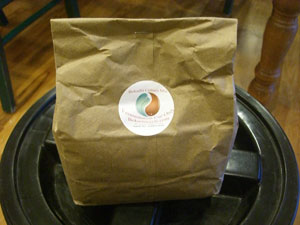
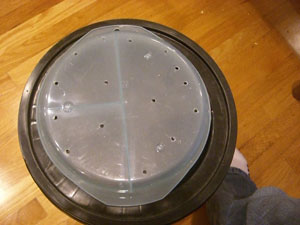
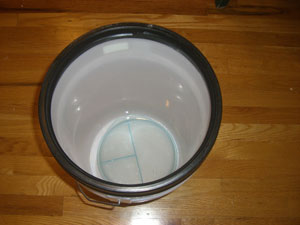

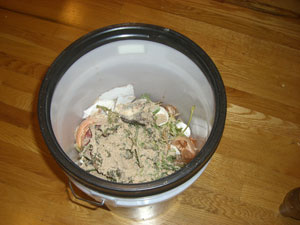
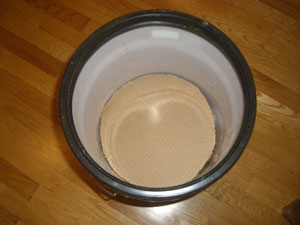
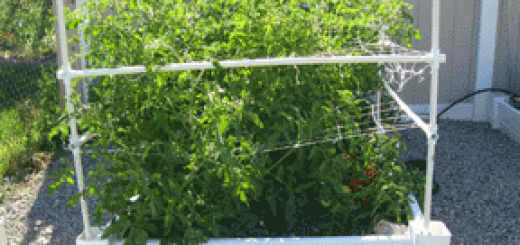
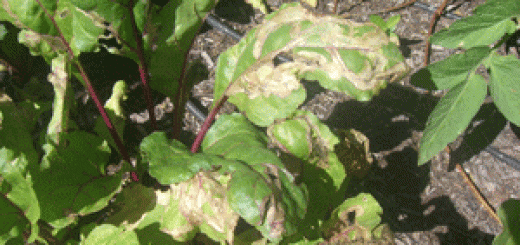
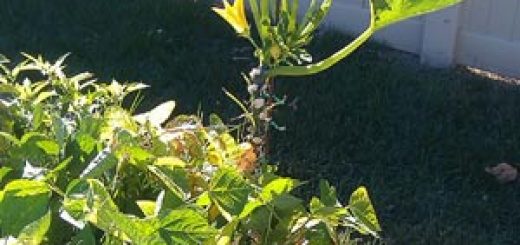

I am not an expert at Bokashi. I might direct this question to the folks at http://www.bokashicycle.com/
From Kati who first introduced me to Bokashi:
I wanted to pass along a friends website so hopefully she could reach out to him. He taught my husband and I about bokashi and now uses it on a very large scale at their orphanage and sustainable farms in the Philippines. (His is also using aquaponics and other cool techniques that are far beyond my scope of knowledge!) He is teaching the locals and Filipino government how to use these concepts and be more sustainable etc. He may be a great resource for Sabina. The website is http://www.alohahouse.org
I am from bombay,India and I live in co-optive housing society with 54 apartments. One of the senior members of the society introduced me to bokashi and I tried it first in my apartment and worked amazingly. So I decided to collect everyone’s kitchen waste and we constructed three pits with lids etc. and we r able to collect one full months kitchen waste in one pit. The only problem is that the lids seem to have some air leakage and we can see some big ugly maggots in the pit which eventually die when we seal the pit with white cement and leave it. It ferments beautifully. We are awaiting the results because we had rains on time this time and could not open the soil. I would like to introduce the system to as many societies as possible but the difficult part is emptying the pit and burying the stuff due to lack of space in mumbai. Also it is not a very pleasant job for some one to do. Is there anything we can do to finish the whole cycle in the it itself. Please advise. Thank you.
Donette–a couple of things. It’s important to keep bokashi buckets out of the sun–direct light will kill the microorganisms. I don’t know about spraying it on the Kandy Kid, I worry that before it dried the bacteria and yeast in the innoculant will react to the sugar in molasses.
What an amazing job you are doing to grow your own food in a way that fits your circumstances. I hope you continue to have great success!
Thank you for this article and discussion thread.I grow all my own food, but have to pay others to dig in the garden for me and just too expensive to pay someone to turn a compost pile. I’m disabled, wheelchair bound 80% of the day, but able to stand and walk a few feet at a time. Since I can’t maintain a compost pile, here is how I am able to grow an abundant supply of vegetables and fruit for free, but I’m now planning to add Bokashi processing to the method. Currently, before I plant the garden, or any single plant/tree, I pay someone to dig trenches 2 feet deep and 1 foot wide across my entire garden and leave them open. Then I visit the local fishing pier and collect everyone’s trash fish (catfish, etc) and go to my local chinese buffet once a month for dinner and while I eat, I ask that they put everyone’s table scraps in a garbage bag for me to take home. I dump all this in the trenches and push the dirt back over the trench as I fill them. It takes me almost 2 months to fill all trenches, but I may fill and cover a few feet a week and as I do, I plant seedson whatever portion I have filled. (by the way, being disabled, to plant seeds and get some Vitamin D from the sunshine is easy. I lay a chaise lounge cushion on the ground next to row, climb out of my wheelchair and lay on my side on cushion, then I can effortlessly place seeds and scoot on my side down row, then climb back into my chair). By the time the seeds sprout and grow to the depth of the rubish below, they are mostly composted. I have planted in some unamended spaces to compare as well as pots and seedling trays watered with fish pond water and here are the results: All seeds from same pack, planted same day and watered same days : After 3 weeks, squash seeds in seedling trays are 3 inches tall with “preleaves”, seeds in 6″ inch pots are 5″ tall with 2-3 real leaves, seeds in unamended garden rows are same as 6″ pots, seeds planted over the fish/scraps rows are 12″ tall, a dozen or more leaves and smal fruit already set. I’m doing fine like this, but since I have to sometimes wait months to be able to afford to pay someone to dig holes/trenches, I’m planning to start using Bokashi composting in Kitty Litter buckets I can get from my neighbor so that once the bucket is full, I can still lift it onto my wheel chair and go set it to brew along the border of my garden until whenever someone comes along that can dig it in between rows for me. My main reason for wanting to add the Bokashi is I’m hoping the effective microbes will improve my plants’ resistence to pests since I don’t use any chemicals and too hard for me to even spray organic formulations on them. One question on making my own Bokashi: I can purchase Dry Molasses from Horse feed store under brand Kandy Kid for about $11 per 50lb bag. I think it is crumbled soybeans sprayed with molasses then air dried. Any feedback on if I skip the bran and just spray the innoculant straight on the Kandy Kid then let it dry, do you think it would work and most importantly, stay viable without fermenting itself so I could store in bins to use throughout the year ?
Jenny – re:bags of leaves –
I believe the reason the scraps are placed in the soil is two-fold. There are a multitude of new bacteria and fungi in soil which may not be present in a bag of leaves. Also, there are no worms in your bag of leaves. Worms do not really eat the scraps but instead feast on the microorganisms growing on the scraps. Thus bokashi is like worm filet migon and that’s why it breaks down quickly in actual soil as opposed to bags of leaves.
I’ve read beer bottling stuff is perfect for Bokashi.
I just saw this, so I’m late to the party. However, I have an idea. Would a beer bottling bucket work for draining the Bokashi “tea”? It has a spigot at the bottom. With a mesh washer installed on the inside it would probably work well. Just a thought because we make our beer and cider ourselves, so this is a normal item I have on hand.
I really enjoyed reading this article. I struggle with composting as well and have not found the “one” that works for me either. Thanks for posting it.
-Nelli
Jenny–I think I have found a local source of bran that is inexpensive at IFA. It is 50 pounds for $11. If the EM-1 only costs $5, then indeed, it is cheaper to make your own. Purchasing it costs more like $6 a pound (including shipping), but for first time users, I think it’s the best option. That way you don’t have to wait several weeks to start, and if you decide Bokashi composting doesn’t work for you, you don’t end up with 50 pounds of Bokashi mix. 🙂
Making my own mix is definitely going to be part of my Bokashi Composting Experiment!
I made my own EM-1 and “bokashi powder.” I searched several sites and found one particularly helpful. If you google search “hawaii healing tree EM-1” you will find the homemade recipes. I invested about $5 into the EM-1, and I have enough for me and the whole neighborhood for the next few years. I paid about $1 per pound of bran at a local co-op. The whole process was very easy, and I am new to the bokashi approach. The only hitch in making it yourself is time. It takes several weeks for the bran to ferment, but I think the savings are worth it! I pack my finished “powder” into small airtight bags, that last approximately a month each. Keeping the bags small, helps safeguard having to throw out too much “powder” if it accidently gets exposed to too much air or kitchen waste. Good luck!
Kati, I’m glad to hear there is somone else who has got the Bokashi bug and it has just opened up doors.
6 weeks ago I was working very, very long hours in an office and feeling my home and work life were unsatisfying and chaotic. All I wanted a month ago was to stop throwing scraps out because I hadn’t kept up my compost (long story), worms (short story – ants), vegie garden, etc. I googled ‘kitchen compost bin’ and sat glued to the computer for 3 days.
I have done so much research and have made the whole process as simple as I can by using a compostable bag in a normal lidded bucket. No juice and I don’t much care as the garden is going to get this soon enough. I’m hoping to ‘value-add’ some scraps by putting it through some worms bellies first. Might speed up my compost process too by popping some microbe rich fermented scrap in. I’m building a ‘bottomless bucket’ system in an ornamental area of the garden – to deal with dog and bird droppings (I have an avairy and a Border Collie) and will start it with a bokashi bag of poo. Later, I might add some wormfarm worms (I’ll give the locals first go).
I’ve been driving my husband crazy sharing all the things I’ve found out. He is usually just really happy if I grow him some purple beans.
Right now, he is creating a raised wicking garden and we have booked, together, for a Permiculture course. Guess the bug is catching.
This is all where I should have been for years so it doesn’t take much scratching to uncover the green in me, but this all fits in, or can fit in, to everyones life. Even those with no interest but to do less harm could pass Bokashi (or other garden products) to the local gardener, community garden or wormfarmer (or just put it in the trash and still speed the process at the dump – not my first option, but cities are trying to do this on a big scale now). They can swing by the local growers market or organic vegie farmer instead of the supermarket. Community relationships are as important as microbial ones.
I’ve found the whole process rather easy (once you get around the sometimes over-complicated information and complete misinformation on the internet). Finding good reliable information from people that live busy lives with limited budgets yet are happy to share their good and bad experiences to help others is the greatest blessing. Thank you Emily and all that visit this site.
Kerri
Emily…I think you were correct that when it is fully fermented, it’s not attractive to animals. We only had a problem on our first batch b/c we hadn’t let it sit long enough and then buried it too shallow…a mistake we quickly learned from :). When it’s finished (@2-3 weeks) in the buckets, it will have a pickled smell to it…it’s not a rancid, unpleasant smell. That’s a decent indicator that it’s ready. You definitely want to “pour off the liquid” fairly regularly while it is fermenting. You’ll be surprised how much liquid will accumulate.
It’s hard to imagine snow with the crazy warm weather we have been having. We’ve been in shorts all week! Post some pix of your snowy garden :).
I haven’t tried making my own Bokashi mix–if you can get the bran in bulk, making it can be much less expensive than buying it. I haven’t done the research on that yet–so far, buying in bulk online seems to be as expensive as buying the mix! If any other readers know of good sources, let us know!
Kati,
I’m almost ready to move my compost into the garden–just in time for 12 inches of snow (the only snow we’ve had all season)! By next week it will probably be all gone.
The good news with burying it, I have a fully-fenced yard so I don’t anticipate any animals getting into it.
One other quick question for anyone making their own bokashi….where do you get your bran?? We had a co-op (Walton Feed) where I could buy it in 25lb bags for next to nothing and it lasted us an entire year however the supplier didn’t deliver it to GA this year so I am in search of economical bran in bulk. Any resources would be great :)!
Thanks!
Hey Emily:
SO glad you tried the bokashi method and had success!! I’m excited to read some of the other comments as well and find other methods and resources. My husband is looking up the Worm Farms as well b/c even though we have 3 bokashi buckets, we sometimes have a back log while we are waiting for them to ferment. Not to mention my son LOVES worms, as does the garden so it should be another fun project.
A few things we learned re. the “bokashi composting”:
Even in Georgia in the winter, we found our food waste fermented slower than in the summer. We left it in the buckets usually for 3 weeks or so rather than 2-3 in the summer.
Regarding burying the buckets…we certainly learned from some mistakes…you need to bury the buckets pretty deep…12-18 inches and then through some dirt in with the the scraps, mix it a bit and then pile on the soil. Our first buckets were not buried deep enough and our neighbors dog discovered them…not so pleasant when he took home some scraps for our neighbors. 🙂
Another things we’ve learned is that the more surface space you have when cutting up your kitchen waste the better. It will break down quicker the smaller it is and the more of the food that is exposed to the microorganisms. We actually attended the Ga Organics conference last week (which was FABULOUS!!!) and one of the presenters said he develops traditional compost in large buckets and even blends some of his kitchen waste before throwing it in. This was part of a whole other cool topic…Aquaponics…I’ll wait for you to try it, Emily :).
With the buckets, have some kind of compression plate is very useful to make sure the food is packet and very little air is present. We had home made buckets initially which weren’t bad but ended up buying the fancier ones b/c pouring off the liquid is much easier and we seem to get a tighter, more compact compost and seal on the bucket. The gamma seal lids are key if you make a home made bucket. We had actually used two big Home Depot buckets (the 5 gallon ones) and made holes in one, set it inside the other and filled it with the waste. We could then take it out and the liquid would settle in the bottom bucket. We failed to use gamma seals though so it never was truly air tight.
The liquid is like gold :). We did an experiment with some lorapetalum bushes in our yard which bordered our neighbor. We dilute the liquid quite a bit and use it to water the trees and bushes around our house. We didn’t tell our neighbor we were going to water our bushes and not his (they are all in a row in between our houses). We wanted to see if it’d make a difference using the compost liquid. Sure enough, our bushes were fuller and brighter after only doing it a few times.
Hope your gardening is off to a great start! We had 75 degree weather today in GA but going down to the 30’s at night next week again so I’m still holding out for that frost date…we’ve had a very warm winter!!
Thanks Emily! I have to check back more often to see all the fun things you are trying.
Hi Emily,
You did a great job of summarizing the Bokashi process! I will make one suggestion that will even simplify the process and take away a bit of inevitable frustration. Instead of putting a drain plate on the bottom – add 2 litres of peat moss (or sawdust or shredded newspaper) to the bottom of the bucket. This will absorb the juice and those nutrients will be returned to the soil with the rest of the fermented waste. The reason is – though the juice may be a great fertilizer – it will smell terrible once exposed to air, which is what is going to happen in the bottom of your bucket. If you want to make a limitless supply of your own fertilizer all you have to do is make some Bokashi tea. Just soak 1 gallon of fermented waste in 3 gallons of water for 24 hours. Use a small aquarium pump and air stone to aerate bucket. You will make 3 gallons of an amazing probiotic fertilizer overnight – and you will not have to deal with the smell (and clean-up nightmare) or the juice. You can find the complete instructions for Bokashi Tea here http://mycrobz.com/use-the-fermented-waste/
Good luck,
Todd
You can make your own Bokashi mix, and use any type of bran you prefer (rice, barley, etc.) I don’t know if the EM mix itself would cause a reaction?
We will begin our worm composting this week. I would’ve liked to tried this method but it seems that it won’t fit into our allergies of dairy and wheat as the mixture you use has both of those allergens in it. 🙁
Thanks for sharing your experiences so far. Will be interesting to see how things go for you.
I have been working long hours the past few years and had given up gardening, composting, and wormfarm. A few hiccups (wet compost, ants in the wormfarm) and all require at least minimal constant attention. Just didn’t have the time or inclination. Two weeks ago, I was ‘googling’ kitchen bin as I wanted to restart my compost but dislike smelly scraps hanging about the house. Up came ‘hits’ on this Bokashi thing…what the?
Bokashi (by any number of different systems) is, to me, like the missing link! It is simply concentrating natural forces to increase the efficiency of what nature does in your garden already. If you compost; it speeds it up and you can add all those things you couldn’t before just by carrying out the fermenting stage first. If you have a wormfarm; you can feed your fermented Bokashi to them, once again including all those things you weren’t able to before – just as in natural systems once the micro-organisms have done most of their work, the worms move in to help finish the process. In the kitchen; you can save scraps without having to pick and choose what can go in, train the family, and rush them out to the compost before the stinking rot sets in. You can just do Bokashi in the garden and forget the rest (as you introduce plenty of micro-organisms depleted living soil will pick up its game and get on with what it does naturally anyway). Let’s face it, humans make a lot of mess. Nature tries to combat it, but with chemicals and disinfecting processes we make it hard for her by getting rid of the good and the bad.
Once I had discovered Bokashi, I was lucky enough to find Jenny’s Bokashi Blog on wordpress and her Bokashiworld facebook page. Here I found not so much a ‘how to’ but a discussion, sharing and on-going trials of various sensible and easy ideas.
I decided to buy the commercial bucket, at my husband’s suggestion, as I was sooo excited to get going once I had spent a day or two glued to the internet. I had lots of ideas for homemade buckets, etc but the delay while I hunted down the right one was too much to take. I had concerns that what some people might call ‘no smell’ might stink to high heaven – but was more than happy to put the thing outside if I couldn’t stand it. As in everything people have different experiences depending on a range of variables (including not following the correct steps and then complaining). I’m prepared for this thing to be as much or little trouble as I want to make it.
I also bought the commercial ‘Bokashi powder’ to start with. This powder is just bran (or similar) inoculated with EM (Effective Micro-organisms) – a range of beneficial micro-organisms required for the ferment of food waste – and a bit of food for the micro-organisms. From my research a simple and safe thing to make, but to use in a kitchen bin I’d need to dry and sieve it; I decided to give that a miss until I get the ball rolling. The bran smells like bran. I’ve heard people say it smells and just think they should rethink doing Bokashi at all, as that does not stink. After 2 weeks in my kitchen occasionally, when I open the lid, I get a wiff of something like what a container of yesterday’s scraps would smell like if I hadn’t taken them out to the compost of rubbish bin yet. Probably more because I didn’t press down or use enough powder on the top last time as the next time I open the lid, smell isn’t there.
I now have a commercial bucket full, a supermarket bag full of dog and bird droppings (which can go where vegies don’t grow – I’m planning to put in a bottomless pipe and add the ‘starter’ bag prior to maybe adding some worms), 2 biobags filled (using Jenny’s bag in a bucket system)while I was holidaying with several families on the weekend, 2 clean empty buckets immediately reusable, a re-established wormfarm ready to start introducing some post-ferment Bokashi to, some vegies surviving on seaweed fertiliser while waiting for the good stuff from Bokashi bucket and wormfarm, lots and lots of options.
Although this all seems new and different, really it has been around for years, it’s just starting to get more user friendly for gardens and city dwellers. Governments are using variations of these methods for natural waste management. If we all keep sharing our honest experiences, we should be able to get great results (and save the world just a little in the process).
I haven’t got into working with Bokashi liquid yet as I’m happy to pour it down the drain – as that’s a good thing, but apparently the liquid from Bokashi bucket requires MUCH more dilution than other liquid fertilisers. Apparently fairly ‘on the nose’ too, which is why I don’t mind forgoing this pleasure when using the bag/bucket method. I will get some from the commercial bucket and the garden will get the lot in the long run anyway.
I will be stockpiling filled bags in an old metal garbage bin in the shed (I’m expecting some smell and there are already plenty of slightly wiffy things in the shed). When I feel like a day in the garden I’ll just get out a few bags and get started. (Once again, something learned from Jenny as she is in a cold climate where she has no choice – can’t garden in winter. I’m just lazy and want to garden when I want to, not when the scraps say I should)
All in all, I am completely hooked! I still can’t get over how everything can just ‘go in the bucket’ making it so much easier for people everywhere to do. Even when I did compost, I had a tendency to have a holiday if I was having people over. With Bokashi, I’ll be doing this everyday!
What the Bokashi does is ferment the food scraps, so animals are not attracted to it. In my reading on the web, one person did say occasionally a raccoon will get into it. As the food ferments, it releases a lot of liquid, Bokashi “tea.” They say you can put this down the drain or septic system just like you’re talking about.
I’ve wanted to write about vermicomposting–can you feed ALL your food scraps to the worms? We literally produce up to 1/2 gallon of scraps per day.
We use a vermicomposter as well. My husband puts all the collected food scraps into the food processor before feeding the worms or putting them into our compost bins. It is not pretty and smells gross, but it breaks down the food better and we have noticed that the worms love it.
My concern is that if I put this into the ground, won’t the critters want to dig it up? Moles, mice, or in my case, dogs and cats?
Would a mixture of yeast and buttermilk work. Buttermilk is what we use in our septic system every month. RidEx is the same.
Hi Emily et al-
Beer homebrewing suppliers have spigoted buckets and false bottoms that might work in the Bokashi setting. Your method is definitely cheaper but it might be worth a look. Love the site.
Jenny, from what I’ve read, you need to take the final step and bury it in the ground. The microorganisms (they are lactic acid, yeast, and a particular bacterium) “pre-digest” the food scraps. When you put it in the ground and bury it, the microorganisms and organisms go to town. It is then rapidly broken down by everything in the soil. In the summer, in 7-10 days it should be unrecognizable, but in winter it can be 20-30 days.
I haven’t gotten that far, that’s why this post is Part 1. 🙂
I was saying that we do not put anything into our pile that would harm anything. Also, that putting it under the dirt does not give any leftover seed a chance to grow.
I have three horses but we live close in to the city, I compost the horse by-products with natural heat & composting worms, we finally bought a tractor to help turn the pile. We have raised gardens because we live near a creek and have what they call hardscrabble soil. (Old creek bed from long ago.) I dig out the raised beds and put the composted by-products under each bed and put the last years dirt back over it. Wow, do I get amazing crops because it warms the soil and feeds the crops when they grow their roots down into it. Other than leftover hay from feeding the horses, I do not use wood shavings ( they suck out the nitrogen as they break down). I also am very concerned about medicines getting into the compost, and am careful.
I’ve been trying the Bokashi method for about 5 months now. I bought my containers inexpensively while living in Japan (where the method originated.) And I made the wheat bran mixture by scratch–a time consuming process, but a mere $5 for a 6 months supply. I’ve been putting the pickled bokashi in garbage bags full of leaves and letting them sit for a few months. Last week, my husband transfered the first batch to the garden and was surprised that all the scraps looked exactly like they did when they initially went into the bucket.
Exactly how chopped up do the food scraps have to be?
I haven’t tried digging holes in yard yet, and have contemplated getting a compost tumbler to add the bokashi to, and therefore speed up the overall process. Since I’m new to the house/yard, I’m also trying to figure out how bokashi would figure into a yard-scrap compost pile.
I’m new to the process, and looking for any information about tried-and-true bokashi results. I even wrote “Organic Gardening” magazine with a request for them to write an article. I need advice! I’m about half-way there, but just not sure how to finish it up. Looking forward to your results!
Thanks
I’m a vermicomposter. Worms eat my garbage! I use the Worm Factory 360. Very easy, compact, no smell, and you can compost inside all winter long. Extra bonus: Worm Tea (leachate drained from the bottom collection tray, it is full of nutrients), which I use to fertilize my plants. Extra, extra bonus: worms for fishing!
I have six chickens, and they eat an amazing amount of scraps. My compost pile still gets goodies, but now in the form of poopandshavings…lol. I really enjoy watching them devour a five gallon bucket of scraps in no time.
Our area is zoned to have up to 6 pets, which can be chickens. However, my development has CCNRs that don’t allow chickens. I’m so bummed. I agree that if we had them, I wouldn’t need to compost food scraps at all!
You should not be taking the clipping or anything off your grass. All the leaves, grass and whatever can just be mulched on the lawn and it will improve the soil. If you haven’t already, switch to organic fertilizer (dried
molasses and corn gluten) and your soil will improve, you will use less water, and not add to the problems of landfills.
Dennis
Interesting. I think the chickens we are getting will take care of most of our food waste but this is certainly something I’ll keep in mind. Thanks for sharing.